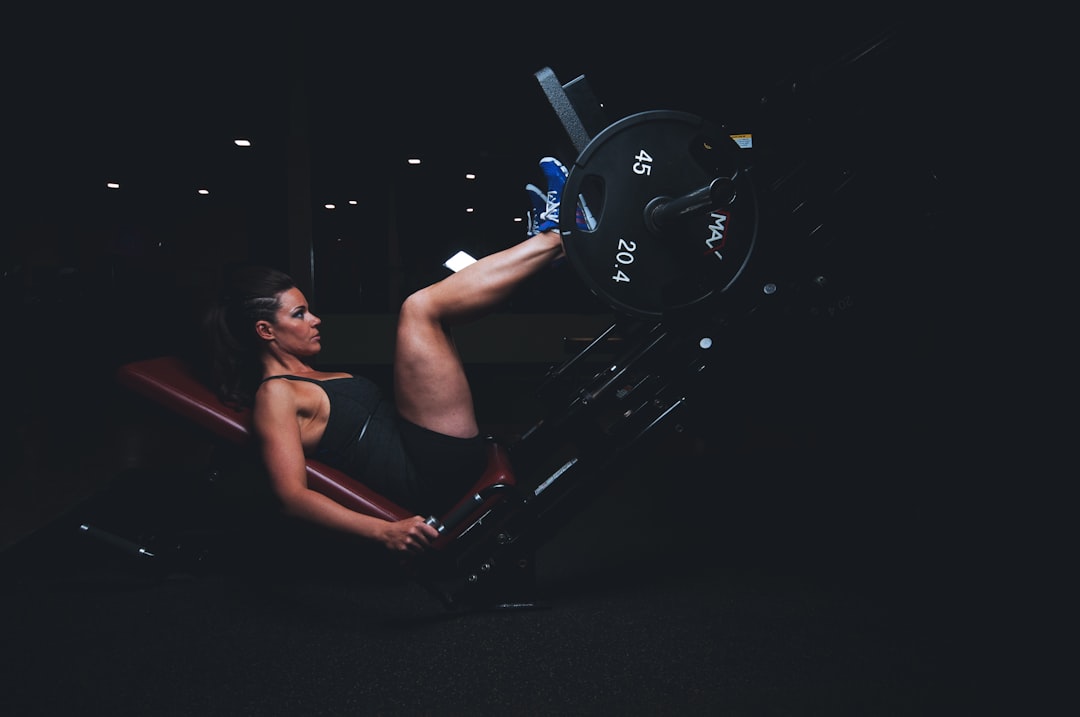Starting an exercise routine often feels like climbing a mountain. The sheer thought of it can be daunting, leading to procrastination and a cycle of guilt. But what if there was a way to bypass your brain’s natural resistance to effort, making fitness feel less like a chore and more like a natural part of your day? This guide explores the revolutionary concept of ‘seated workouts’ – a clever strategy to trick your brain into embracing physical activity, even when motivation is low.
In this article, you’ll discover why traditional exercise routines often fail, how seated exercises offer a unique psychological advantage, and practical ways to integrate them into your busy life. Get ready to unlock a new, sustainable path to fitness without ever having to leave your chair.
The Psychological Hurdle of Starting an Exercise Routine
For many, the biggest barrier to fitness isn’t physical inability, but psychological resistance. Our brains are wired for efficiency, often preferring to conserve energy unless a clear, immediate reward is perceived. This inherent wiring can make initiating a new, demanding exercise routine incredibly challenging.
Why Our Brains Resist Effort
When faced with the prospect of a strenuous workout, the brain often triggers a ‘fight or flight’ response, interpreting the effort as a threat to energy reserves. This can lead to feelings of dread, anxiety, and a strong urge to procrastinate. The perceived effort outweighs the delayed gratification of long-term health benefits, making it difficult to form consistent habits.
Furthermore, the brain thrives on routine and predictability. Introducing a new, demanding activity disrupts established neural pathways, requiring significant mental energy to adapt. This cognitive load contributes to the feeling of ‘it’s too hard,’ even before the physical exertion begins.
Introducing Seated Workouts: A Low-Barrier Entry to Fitness
Seated workouts involve performing exercises while remaining in a chair or seated position. These aren’t just for individuals with mobility issues; they are a powerful tool for anyone struggling with exercise consistency. By removing the need to stand, balance, or move large distances, seated exercises drastically lower the perceived effort.
More Than Just Chair Yoga
While chair yoga is a popular form of seated exercise, the concept extends to strength training, cardio, and flexibility. From seated leg lifts to arm circles and core twists, a wide range of movements can be adapted. The key benefit lies in their accessibility and the minimal disruption they cause to your daily routine.
These exercises can be performed at your desk, during a TV show, or even while waiting for an appointment. This flexibility makes them incredibly easy to integrate, reducing the mental friction associated with ‘finding time’ for a workout.

How Seated Workouts “Trick” Your Brain
The genius of seated workouts lies in their ability to bypass the brain’s natural resistance mechanisms. By presenting exercise in a less intimidating format, you reduce the perceived threat and increase the likelihood of initiation.
The Power of Lowered Perceived Effort
When an activity seems easy, the brain is less likely to activate its energy-conservation protocols. Seated exercises feel less demanding because they eliminate elements like standing balance or high impact. This tricks your brain into thinking, “This isn’t so bad,” making it easier to start and continue.
This reduction in perceived effort is crucial for habit formation. Each time you successfully complete a seated exercise, even a small one, your brain registers a ‘win.’ These small wins accumulate, building positive feedback loops that reinforce the behavior and make it more likely to occur again.
Building Momentum and Self-Efficacy
Starting with easy, accessible movements builds momentum. As you consistently perform seated exercises, you begin to feel more capable and confident in your ability to engage in physical activity. This increase in self-efficacy is a powerful motivator, paving the way for more challenging workouts in the future.
The brain learns through repetition and positive reinforcement. By making exercise feel achievable, seated workouts reprogram your brain’s association with physical activity from ‘hard and unpleasant’ to ‘manageable and rewarding.’
Practical Seated Workout Routines for Daily Life
Integrating seated exercises is simpler than you think. Here are some effective movements you can do almost anywhere, anytime.
Upper Body & Core in Your Chair
- Seated Arm Circles: Extend arms out to the sides. Make small circles forward for 30 seconds, then backward for 30 seconds. Repeat 2-3 times.
- Desk Push-ups (Modified): Place hands on your desk, lean in, and push back up. This engages chest and triceps. Perform 10-15 repetitions.
- Seated Torso Twists: Sit tall, place hands behind your head or across your chest. Gently twist your torso to the right, then to the left. Repeat 10-12 times per side.
- Chair Crunches: Sit at the edge of your chair, lean back slightly, and bring your knees towards your chest, engaging your core. Perform 10-15 repetitions.
Lower Body & Cardio from a Seat
- Seated Leg Lifts: Extend one leg straight out, hold for a few seconds, then lower. Repeat 10-15 times per leg.
- Calf Raises: While seated, lift your heels off the floor, engaging your calf muscles. Hold briefly, then lower. Perform 15-20 repetitions.
- Marching in Place: Lift your knees alternately as if marching. Add arm movements for a full-body cardio boost. Continue for 1-2 minutes.
- Seated Jumping Jacks: Instead of jumping, extend arms and legs out to the sides simultaneously, then bring them back in. Repeat for 1-2 minutes.

Integrating Seated Workouts into Your Daily Life
Consistency is key to forming any new habit. Seated workouts excel here because they require minimal disruption to your existing routine.
Micro-Workouts for Maximum Impact
Instead of aiming for a single, long workout, break your activity into ‘micro-workouts.’ Perform a few seated exercises during commercial breaks, while on a phone call, or during short breaks at work. These small, consistent efforts add up over time.
For instance, you could commit to 5 minutes of seated exercises every hour, or perform one specific exercise every time you check your email. This approach leverages existing cues in your environment to trigger the new behavior, making it more automatic.
Tracking Progress and Staying Motivated
Keep a simple log of your seated workouts. Seeing your progress, even small increments, reinforces the positive feedback loop in your brain. Celebrate these small victories to maintain motivation. Remember, the goal is consistency and habit formation, not immediate peak performance.
Seated Workout Benefits at a Glance
| Benefit | Explanation |
|---|---|
| Reduced Perceived Effort | Makes starting easier by minimizing mental resistance. |
| Increased Accessibility | Can be done anywhere, anytime, regardless of space or attire. |
| Improved Consistency | Easier to integrate into daily routines, fostering habit formation. |
| Enhanced Self-Efficacy | Small successes build confidence for future, more challenging activities. |
| Cumulative Health Benefits | Even short bursts of activity contribute to overall physical and mental well-being. |

Beyond the Chair: Building Momentum for Greater Fitness
Seated workouts are not just an end in themselves; they can be a powerful stepping stone. Once your brain has been ‘tricked’ into accepting regular physical activity, you’ll find it easier to gradually increase intensity and duration.
Transitioning to More Active Routines
As your confidence and physical capacity grow, you might naturally feel inclined to incorporate standing exercises, short walks, or even light jogging. The key is to listen to your body and your brain, making gradual adjustments rather than drastic changes that could trigger old resistance patterns.
Remember, any movement is better than no movement. Seated workouts provide a fantastic foundation for a more active lifestyle, proving that fitness doesn’t have to be intimidating or time-consuming.
“The journey of a thousand miles begins with a single step.” In fitness, that step can often be taken from the comfort of your chair. By making exercise accessible and non-threatening, we can overcome psychological barriers and build lasting habits.
Conclusion: Your Path to Sustainable Fitness Starts Now
Overcoming the mental hurdle of starting an exercise routine is often the hardest part. Seated workouts offer a brilliant solution by lowering the perceived effort, making physical activity feel manageable and even enjoyable. This ‘brain hack’ approach builds momentum, fosters self-efficacy, and lays the groundwork for a consistently active lifestyle.
Don’t let the idea of a strenuous gym session deter you from pursuing better health. Start small, start seated, and let your brain discover the joy of movement. Your journey to sustainable fitness begins with that first, easy seated exercise.
Ready to take the first step? Try incorporating just 5 minutes of seated exercises into your day, starting today. For more information on the benefits of physical activity, even in small amounts, consider exploring resources like the CDC Physical Activity Guidelines, which emphasize the importance of regular movement for overall health.
What’s one seated exercise you’re going to try today to trick your brain into getting fit?
